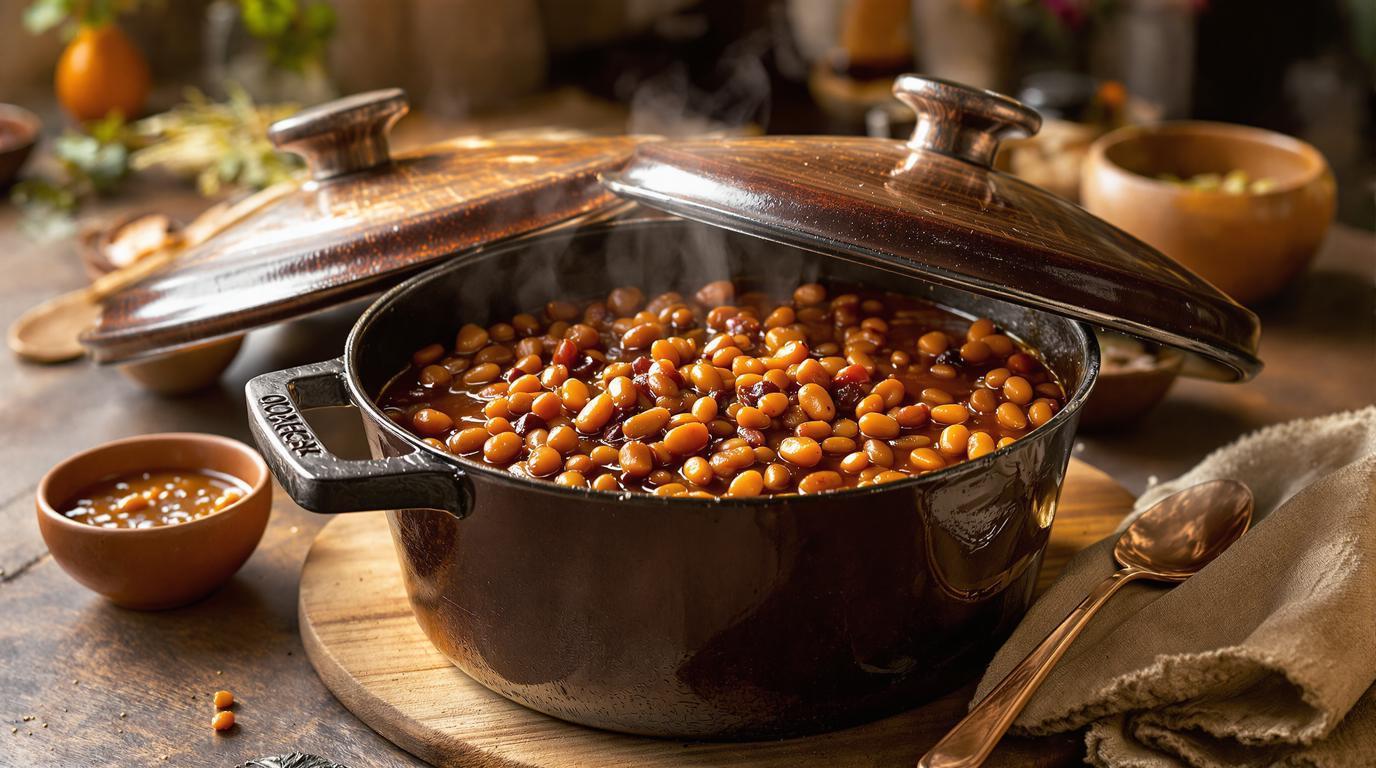There’s something almost magical about a proper pot of baked beans—that perfect balance of sweet, savory, and smoky flavors that only comes from hours of slow cooking. The first time I tasted authentic New England-style baked beans wasn’t in Boston, but at a remote cabin in Maine where a friend’s grandmother had been tending her bean pot since dawn. That rich molasses aroma filling the kitchen told me immediately: this wasn’t anything like the canned variety I’d grown up with. The surprising complexity from such humble ingredients became my culinary obsession for months afterward.
The Story Behind Grandmother’s Baked Beans
Traditional New England baked beans trace back to Native American cooking techniques, later adapted by colonial settlers who introduced molasses—a byproduct of the region’s sugar trade. What makes grandmother-style beans special is the patience they demand. This isn’t fast food; it’s slow food at its finest, developed during an era when beans would bake overnight in the residual heat of banked hearth fires or community brick ovens on Sabbath days when cooking was forbidden.
Chef’s Note: The perfect bean texture—tender but intact with a creamy interior—can only come from dried beans. Canned beans might be convenient, but they’ll never achieve that perfect balance of structure and creaminess that defines this dish.
Ingredients Spotlight
• 1 pound (454g) dried navy beans
• 8 oz (227g) salt pork or thick-cut bacon, diced
• 1 medium yellow onion, finely chopped
• ⅔ cup (158ml) molasses (preferably Crosby’s Fancy)
• ¼ cup (50g) dark brown sugar, packed
• 2 teaspoons dry mustard powder
• 1 teaspoon kosher salt
• ½ teaspoon freshly ground black pepper
• 3-4 cups (710-946ml) water
• 1 teaspoon baking soda (optional, for soaking)
The humble navy bean is the star here—small, dense, and able to absorb flavor while maintaining its shape. Salt pork delivers a more authentic flavor than bacon, but either works beautifully. The molasses isn’t just sweetener; it’s the soul of the dish, providing deep complexity that can’t be substituted with other sweeteners.
Step-by-Step Guide
- Soak the beans: Sort through beans, removing any debris. Place in a large bowl with 6 cups cold water and 1 teaspoon baking soda (which helps soften them faster). Let soak overnight (8-12 hours). Drain and rinse thoroughly.
- Parboil: Transfer soaked beans to a large pot, cover with fresh water, and bring to a boil for exactly 10 minutes. Drain again.
- Prepare: Preheat oven to 300°F (150°C). In a heavy 4-quart Dutch oven or bean pot, layer half the diced salt pork or bacon, add beans, then scatter the remaining pork and onion on top.
- Season: In a measuring cup, whisk together molasses, brown sugar, mustard powder, salt, and pepper with 3 cups hot water. Pour over beans, adding additional hot water if needed to just barely cover the beans.
- Slow bake: Cover tightly with a lid or heavy-duty foil and bake for 3 hours. Check hourly, adding hot water if beans appear dry on top.
- Finish uncovered: Remove lid and bake an additional 30-60 minutes until sauce has thickened and top has caramelized slightly.
Expert Techniques
The key to transforming this dish from good to exceptional lies in three critical techniques. First, never rush the soaking—properly hydrated beans cook evenly and develop better texture. Second, maintain consistent moisture during baking; the beans should always remain just barely submerged. Finally, that final uncovered baking period concentrates flavors through evaporation and creates those coveted caramelized edges.
For a vegetarian variation that still delivers deep flavor, substitute the salt pork with 2 tablespoons of olive oil and add 1 teaspoon of smoked paprika. For a maple-forward Vermont style, replace half the molasses with grade B maple syrup.
Presentation & Pairing Ideas
Serve these beans piping hot in their cooking vessel for rustic appeal, or transfer to a warmed ceramic bowl. They’re traditionally paired with brown bread, but they’re equally at home alongside barbecued meats, on a brunch plate with eggs, or as a hearty side to a simple green salad dressed with vinaigrette to cut through the richness.
Wine pairing might seem unusual with baked beans, but a chilled dry Riesling beautifully complements the sweet-savory balance, while a fruit-forward Zinfandel stands up to the smoky notes if you prefer red.
The beauty of grandmother-style baked beans lies in their ability to improve with time. Make them a day ahead if possible—the flavors meld and deepen overnight, creating an even more soulful dish. Trust the process, embrace the slow cooking, and you’ll create something truly transcendent from the humblest ingredients. As with most heritage recipes, the real secret ingredient is patience.
